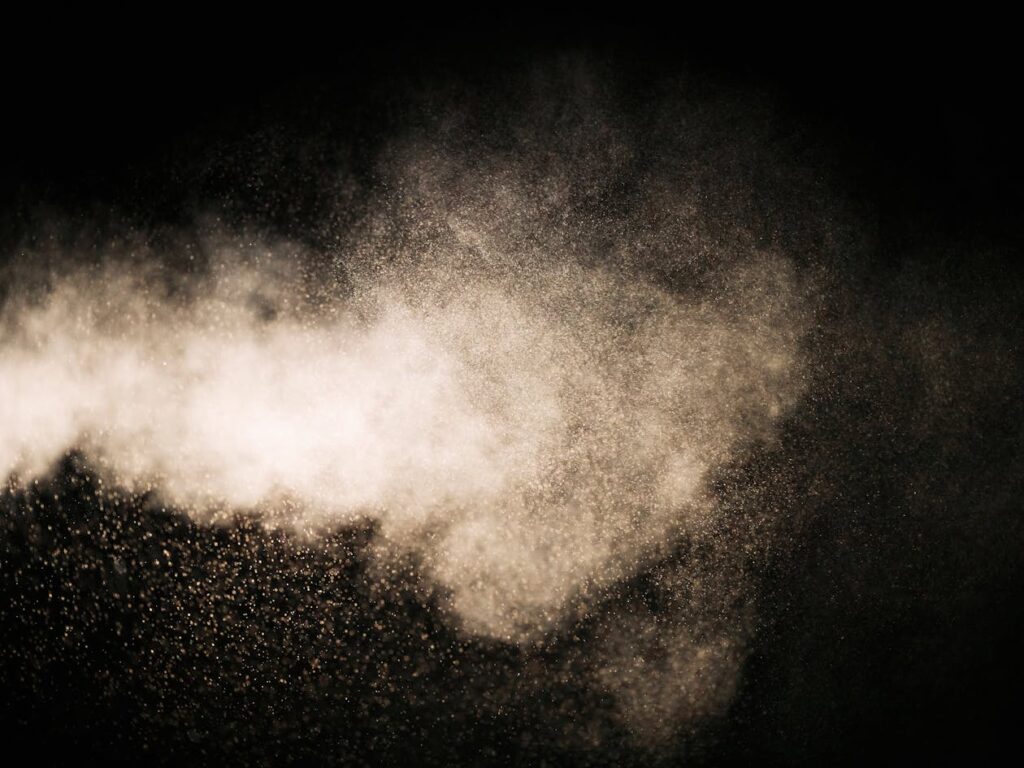Study Reveals Using Scented “Wax Melts” Creates Particles in Indoor Air That Are Comparable to Particles Found in Diesel Exhaust

Walk into any home goods store and you’ll find entire aisles dedicated to flameless fragrance products marketed as “safe,” “clean,” and “non-toxic” alternatives to traditional candles. Millions of people have embraced scented wax melts as the perfect solution for creating ambiance without flames, smoke, or apparent danger.
But what if everything we’ve been told about these products is wrong? Scientists at Purdue University just completed a groundbreaking study that will make you question every fragrance product in your home. Using sophisticated equipment capable of detecting particles smaller than viruses, researchers made a discovery so shocking it challenges the entire premise of “safer” home fragrances.
Hidden within the pleasant aromas filling your living spaces, something sinister occurs at the molecular level—a chemical reaction producing billions of invisible particles that flood your indoor air. What researchers found rivals pollution levels from sources you’d never dream of bringing into your home.
Before you dismiss this as another scare study, consider this: the pollution created by your cozy wax melts compares to exhaust from diesel engines. Yes, you read that correctly. Your quest for a pleasant-smelling home might be creating air quality comparable to standing behind a running truck.
What Scientists Actually Found in a Tiny House Lab
Purdue researchers conducted their study in the zEDGE (zero-Energy Design Guidance for Engineers) test house, a specially designed laboratory equipped with the most advanced air quality monitoring equipment available. Two sophisticated machines tracked every particle formed during wax melt use: a particle size magnifier-scanning mobility particle sizer and a proton transfer reaction time-of-flight mass spectrometer.
These aren’t your typical air quality monitors. Scientists used equipment sensitive enough to detect and measure particles down to a single nanometer smaller than anything visible to the human eye. Real-time monitoring revealed exactly what happens when fragrance meets indoor air chemistry.
Researchers tested multiple scented wax melts under controlled conditions, measuring particle formation as it occurred. Advanced sensors tracked not just particle numbers but their sizes, growth rates, and respiratory impact potential. Every aspect of the pollution process was documented with scientific precision.
Results emerged within minutes of turning on wax warmers, revealing a consistent pattern that occurred regardless of fragrance type or brand tested.
Meet the Invisible Culprits: Terpenes and Ozone
Behind every pleasant fragrance lurk chemical compounds called terpenes—the same molecules that give pine trees their scent and oranges their aroma. Manufacturers add these compounds to wax melts in concentrated doses to create appealing fragrances that quickly fill rooms.
Meanwhile, your indoor air contains ozone, even without obvious sources of pollution. Ozone enters homes through outdoor air, gets produced by electronic devices, and accumulates in enclosed spaces. Most people never realize ozone exists in their living environments.
When terpenes meet ozone, chemistry takes over. Brandon Boor, the study’s lead researcher, explains: “At this scale, we can observe the earliest stages of new particle formation, where fragrances react with ozone to form tiny molecular clusters. These clusters then rapidly evolve, growing and transforming in the air around us.”
Within minutes, billions of these molecular clusters form and grow into particles small enough to penetrate deep into lung tissue. The reaction continues as long as both terpenes and ozone remain present, creating sustained particle production throughout wax melt use.
Wax Melts vs Candles: The Plot Twist Nobody Saw Coming

Marketing claims position wax melts as safer alternatives to candles because they eliminate flames, smoke, and combustion-related pollutants. Industry advertising emphasizes the absence of soot, carbon monoxide, and fire hazards associated with traditional candles.
However, researchers discovered wax melts can actually release more volatile organic compounds than candles. Higher fragrance concentrations combined with direct heating create larger surface areas for chemical release. What seems safer proves potentially more problematic for indoor air quality.
Scientists found that wax melts produce particle concentrations comparable to—and sometimes exceeding—those from burning candles. The absence of flames doesn’t eliminate pollution; it simply changes the pollution source from combustion to chemical reactions.
Particle production rates from wax melts measured three times higher than rates from indoor candle burning in comparable studies. Flame-free doesn’t mean harm-free when chemistry creates pollution at the molecular level.
Numbers That Will Make You Rethink Your Air Fresheners
Particle concentration measurements revealed staggering pollution levels from seemingly innocent wax melts. During use, researchers detected over one million particles per cubic centimeter of air—concentrations comparable to diesel engine exhaust and gas stove emissions.
Particle production rates reached 6.4 trillion particles per minute during peak fragrance release. For comparison, background air in homes without fragrance products typically contains fewer than 100,000 particles per cubic centimeter.
Scientists documented particle nucleation rates ranging from 143 to 3,588 particles per cubic centimeter per second—orders of magnitude higher than typical outdoor pollution events. Indoor wax melt use creates pollution events more intense than most environmental exposures.
These numbers represent real particles entering your respiratory system every breath you take in fragranced environments.
Size Matters: Why These Particles Are So Dangerous

Nanoparticles created by wax melts measure smaller than viruses, allowing them to penetrate barriers that stop larger pollutants. Once inhaled, these particles can cross from lungs into bloodstreams, potentially reaching organs throughout the body including the brain and liver.
Research scientist Nusrat Jung emphasizes the significance: “Fragranced products are not just passive sources of pleasant scents – they actively alter indoor air chemistry, leading to the formation of nanoparticles at concentrations that could have significant health implications.”
Respiratory tract deposition rates during wax melt use reached 29 billion particles per minute entering various lung regions. Most particles lodge in upper respiratory areas, but significant numbers penetrate deep into pulmonary regions where gas exchange occurs.
Previous studies have linked similar nanoparticle exposure to cardiovascular disease, respiratory problems, and inflammatory responses. While specific health effects of fragrance-derived particles require more research, their size and behavior suggest potential health risks.
Ventilation Won’t Save You (But It Helps a Little)
Researchers tested wax melts under different ventilation conditions to determine whether fresh air exchange could mitigate particle formation. While higher ventilation rates slightly reduced particle concentrations, they didn’t eliminate the pollution.
Even with optimal ventilation, particle formation continued throughout wax melt use. Terpene-ozone reactions persisted despite air exchange, creating sustained pollution events lasting hours.
Surprisingly, particle formation continued even after turning off wax warmers. Elevated terpene levels remained in indoor air long enough to sustain chemical reactions and particle production beyond active fragrance use.
Ventilation helps reduce particle accumulation but can’t prevent the fundamental chemistry driving pollution formation when fragrance products operate indoors.
The Unscented Test That Proved Everything

To confirm their findings, scientists tested unscented wax melts under identical conditions. Results proved definitively that fragrance chemicals, not melted wax itself, create particle pollution.
Unscented wax produced no significant terpene emissions, particle formation, or air quality changes. Background particle levels remained stable throughout unscented wax testing, confirming that heating wax alone doesn’t create pollution.
Only scented products triggered the chemical reactions responsible for particle formation. Specific terpene compounds including d-limonene and linalool proved most reactive with indoor ozone, creating the highest particle production rates.
Scientific evidence clearly establishes fragrance chemicals as the pollution source, not the wax delivery system or heating process.
Your Lungs on Wax Melts: Respiratory Dose Rates Revealed
Respiratory impact calculations revealed alarming exposure levels during typical wax melt use. Scientists estimated that adults inhale particle doses three orders of magnitude higher than background exposure levels.
Particle deposition rates in deep lung regions reached 200 million particles per minute during fragrance use—comparable to exposure levels near busy roadways or industrial facilities. Upper respiratory regions received even higher particle doses.
Jung noted the broader implications: “If you’re using cleaning and aromatherapy products full of chemically manufactured scents to recreate a forest in your home, you’re actually creating a tremendous amount of indoor air pollution that you shouldn’t be breathing in.”
Health impact studies suggest terpene-derived particles contribute to approximately five additional cardiovascular deaths per 100,000 people annually in the United States, highlighting potential population-level health consequences.
Beyond Wax Melts: Other Home Fragrances Under Suspicion

Previous research from the same team found similar particle production from oil diffusers, air fresheners, and disinfectant products. Any product releasing terpenes into indoor environments can trigger comparable chemical reactions and particle formation.
Essential oil diffusers, marketed as natural alternatives, often produce even higher terpene concentrations than synthetic fragrances. Natural doesn’t necessarily mean safer when chemistry governs pollution formation.
Building design and ventilation systems need updating to account for indoor nanoparticle pollution from fragrance products. Current standards focus on traditional pollutants while ignoring emerging sources of indoor air contamination.
Protecting Yourself Without Giving Up All Fragrance
Complete fragrance avoidance isn’t necessary, but awareness enables informed decisions about indoor air quality. Consider timing fragrance use when homes are unoccupied, allowing particle levels to decrease before returning.
Maximize ventilation during and after fragrance use by opening windows and operating exhaust fans. While ventilation can’t prevent particle formation, it accelerates their removal from indoor environments.
Choose fragrance products with lower terpene concentrations or use them less frequently to reduce overall exposure. Natural ventilation remains more effective than mechanical systems for removing nanoparticles.
Focus fragrance use in larger spaces where particle concentrations will be lower, and avoid using multiple fragrance products simultaneously.
The Bottom Line: Rethinking “Safe” Home Fragrances

Purdue University’s research fundamentally challenges assumptions about flameless fragrance safety. Marketing claims about cleaner, safer alternatives don’t account for the invisible chemistry occurring in your indoor air.
Flame-free doesn’t equal harm-free when molecular-level reactions create pollution comparable to diesel exhaust. Consumer awareness and industry transparency are needed to address this emerging indoor air quality concern.
More research is urgently needed to understand the long-term health implications of chronic exposure to fragrance-derived nanoparticles. Until then, informed caution seems prudent.
What will you do now that you know your favorite home fragrance might be polluting your air worse than truck exhaust?
Loading...

